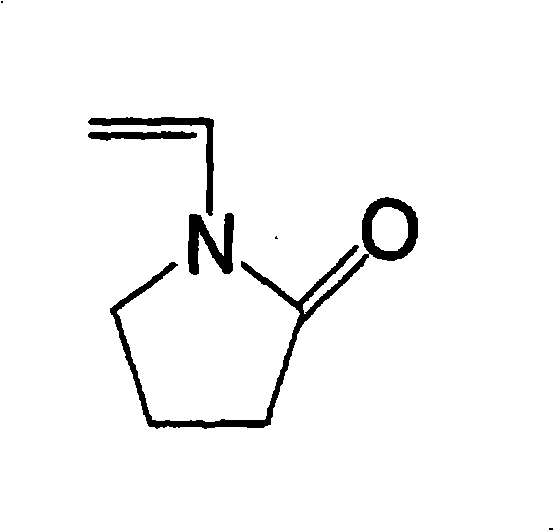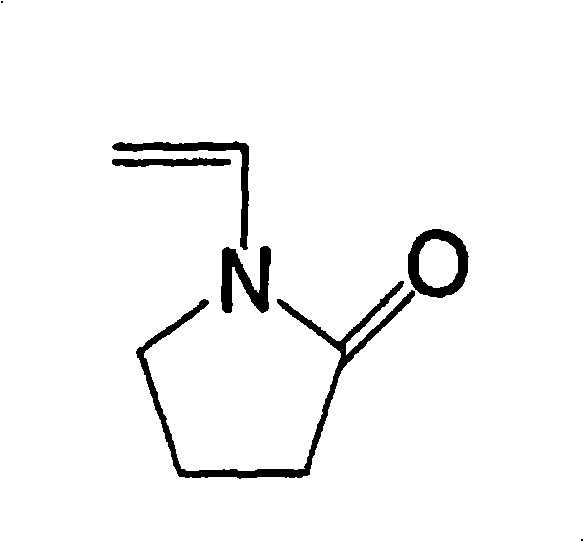Method for forming metal film and method for forming metal pattern
A metal pattern and metal film technology, used in metal material coating process, transportation and packaging, liquid chemical plating, etc., can solve the problems of high frequency transmission adaptability loss, fine wiring obstruction, etc., and achieve sufficient electrical conductivity , excellent adhesion, excellent high frequency characteristics
- Summary
- Abstract
- Description
- Claims
- Application Information
AI Technical Summary
Problems solved by technology
Method used
Image
Examples
Embodiment 1
[0398] (Preparation of Substrate)
[0399] A polyimide film (product name: Kapton, manufactured by Toray Dubon Co., Ltd.) was used as a base material, and the following photopolymerizable composition was coated on the surface using a No. 18 rod coater (rodbar ロツドバ 1). It was dried at °C for 2 minutes to form an intermediate layer with a film thickness of 6 μm.
[0400] Then, a 400W high-pressure mercury lamp (model: UVL-400P, manufactured by Rigaku Sangyo Co., Ltd.) was used to irradiate the substrate with the intermediate layer with light for 10 minutes to prepare a substrate A.
[0401]
[0402] ·Allyl methacrylate / methacrylic acid copolymer 2g
[0403] (copolymerization molar ratio 80 / 20, average molecular weight 100,000)
[0404] ·Ethylene oxide modified bisphenol A diacrylate 4g
[0405] (IR125 Wako Pure Pharmaceutical)
[0406] ·1-Hydroxycyclohexyl phenyl ketone 1.6g
[0407] ·1-methoxy-2-propanol 16g
[0408] (formation of graft layer)
[0409] On the surface o...
Embodiment 2
[0423] (Manufacture of graft layer)
[0424] On the substrate A produced in the same manner as in Example 1, a polymer P1 coating liquid having the following composition was applied using a spinner. And, the film thickness of the obtained film was 0.8 μm.
[0425]
[0426] ·Hydrophilic polymer P1 (the synthesis method is shown below) 0.25g
[0427] ·Water 5g
[0428] ·Acetonitrile 3g
[0429]
[0430] Dissolve 18g of polyacrylic acid (average molecular weight: 25,000) in 300g of DMAc, add 0.41g of hydroquinone, 19.4g of 2-methacryloxyethyl isocyanate, 0.25g of dibutyltin dilaurate, and react at 65°C 4 hours. The acid value of the obtained polymer was 7.02 meq / g. Neutralize the carboxyl group with 1mol / L sodium hydroxide aqueous solution, add it to ethyl acetate, and precipitate the polymer, which can better clean the hydrophilic polymer.
[0431] The obtained film was exposed for 1 minute using a 400W low-pressure mercury lamp. Then, the obtained film was washed wit...
Embodiment 3
[0438] (Manufacture of graft forming material)
[0439] Substrate A produced in the same manner as in Example 1 was immersed in a tert-butyl acrylate solution (30% by weight, solvent: propylene glycol monomethyl ether (MFG)), and exposed for 30 minutes under an argon atmosphere using a 400W high-pressure mercury lamp.
[0440] The film obtained after light irradiation was well washed with propylene glycol monomethyl ether (MFG) to obtain a graft-forming material E grafted with poly(t-butylacrylate).
[0441] (formation of graft layer)
[0442] On the obtained graft-forming material E, a solution having the following composition was applied. In addition, the film thickness of the poly(tert-butyl acrylate) film was 0.5 μm.
[0443] ・Triphenylsulfonium trifluoride (triflate triflate) 0.05g
[0444] ·Methyl ethyl ketone (MEK) 1g
[0445] Next, the obtained film was exposed for 1 minute using a 400 W high-pressure mercury lamp, and then heated at 90° C. for 2 minutes. Then, the ...
PUM
| Property | Measurement | Unit |
|---|---|---|
| boiling point | aaaaa | aaaaa |
| particle diameter | aaaaa | aaaaa |
| thickness | aaaaa | aaaaa |
Abstract
Description
Claims
Application Information
 Login to View More
Login to View More - R&D
- Intellectual Property
- Life Sciences
- Materials
- Tech Scout
- Unparalleled Data Quality
- Higher Quality Content
- 60% Fewer Hallucinations
Browse by: Latest US Patents, China's latest patents, Technical Efficacy Thesaurus, Application Domain, Technology Topic, Popular Technical Reports.
© 2025 PatSnap. All rights reserved.Legal|Privacy policy|Modern Slavery Act Transparency Statement|Sitemap|About US| Contact US: help@patsnap.com



